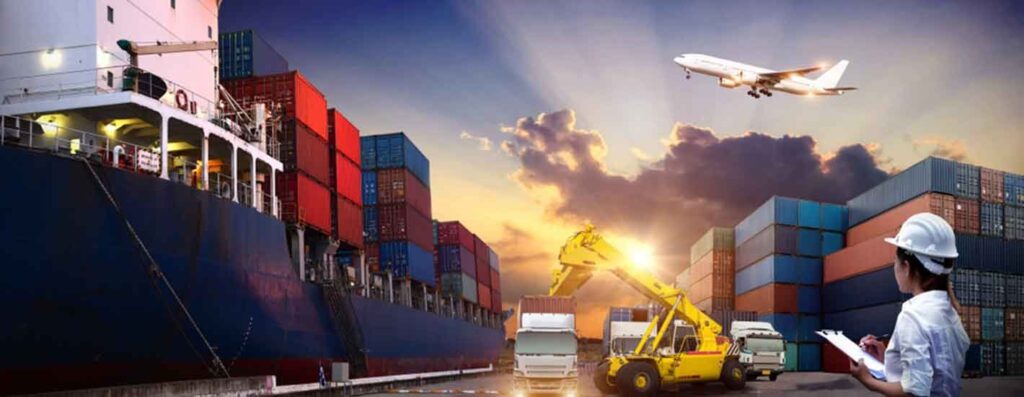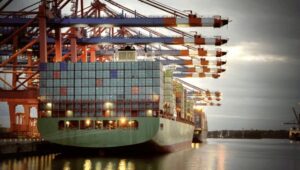The trade route between China and Canada is a vital artery of global commerce. Fueled by a seemingly insatiable demand for goods, cargo ships diligently traverse the vast Pacific Ocean, carrying everything from electronics and furniture to clothing and raw materials. This article serves as your comprehensive guide to navigating this crucial route, exploring its significance, potential challenges, and the keys to a successful voyage.
The Importance of the China-Canada Trade Route

The China-Canada trade route is a cornerstone of the globalized economy. China, the world’s manufacturing powerhouse, exports a staggering amount of goods, while Canada, a resource-rich nation, imports a significant portion of its consumer products. This symbiotic relationship fuels economic growth for both countries.
Here are some key factors that highlight the importance of this route:
- Economic Powerhouse: China’s booming manufacturing sector produces a vast array of goods, making it an attractive source for Canadian importers.
- Diversified Imports: Canada relies on China for a wide range of products, from everyday essentials like clothing and footwear to complex machinery and electronics.
- Resource-Rich Canada: Canada boasts an abundance of natural resources like lumber, minerals, and agricultural products, which China readily imports.
The constant flow of goods between these two nations necessitates a robust and efficient cargo shipping system.
Challenges and Opportunities in Cargo Voyages
While the China-Canada trade route offers immense economic advantages, it also presents certain challenges. Here’s a closer look at both sides of the coin:
Challenges:
- Long Voyage: The vast distance between China and Canada translates to lengthy voyages, impacting delivery times and potentially increasing transportation costs.
- Weather Conditions: The Pacific Ocean can be unpredictable, with storms and rough seas posing risks to cargo ships and their crews.
- Fluctuating Fuel Prices: The cost of fuel is a significant expense for cargo ship operators. Sudden price increases can disrupt profit margins.
Opportunities:
- Technological Advancements: The shipping industry is constantly innovating. Newer, more fuel-efficient ships and advanced tracking systems can help optimize routes and reduce costs.
- Strategic Partnerships: Collaboration between shipping companies, freight forwarders, and customs agencies can streamline the cargo shipping process.
- Growing Demand: As the demand for goods continues to rise, the China-Canada trade route offers promising opportunities for growth within the shipping industry.
By effectively mitigating challenges and capitalizing on opportunities, companies can ensure smooth and profitable cargo voyages between China and Canada.
Overview of the China-Canada Cargo Voyage Route
The China-Canada cargo voyage route typically begins at major Chinese ports like Shanghai, Ningbo, or Shenzhen. From there, ships embark on their journey across the Pacific Ocean, navigating well-established trade routes. The most common destination ports in Canada include Vancouver, Montreal, and Halifax.
The specific route chosen depends on various factors, including:
- Cargo Type: Different types of cargo may require specialized handling or temperature-controlled environments, influencing the route selection.
- Port Congestion: Avoiding congested ports can expedite the delivery process.
- Weather Conditions: Seasonal weather patterns are factored in to ensure safe passage for the ship and its crew.
Understanding these factors plays a crucial role in planning an efficient and cost-effective cargo voyage.
Key Players in the Cargo Voyage Industry

Several key players contribute to the smooth operation of the China-Canada cargo voyage industry:
- Shipping Companies: These companies own and operate the cargo ships that transport goods across the Pacific Ocean.
- Freight Forwarders: Freight forwarders act as intermediaries between shippers and shipping companies, managing logistics, documentation, and customs clearance.
- Port Authorities: Port authorities manage the infrastructure and operations of ports, ensuring the safe and efficient loading and unloading of cargo.
- Customs Agencies: Customs agencies enforce import and export regulations, ensuring compliance with trade laws.
Effective collaboration between these players is vital for the successful execution of cargo voyages.
Factors to Consider When Planning a Cargo Voyage from China to Canada
Planning a successful cargo ship from China to Canada requires careful consideration of several factors. Here’s a breakdown of the key elements to keep in mind:
- Cargo Type and Volume: The type and volume of cargo will significantly impact your shipping strategy. Bulk goods like grains or coal might be best suited for larger, bulk carrier ships, while high-value electronics or temperature-sensitive goods might require specialized containers on container ships. Understanding your cargo’s specific needs is crucial for selecting the appropriate vessel and ensuring its safe transportation.
- Port Selection: Choosing the right ports in China and Canada is essential for both efficiency and cost-effectiveness. Factors like proximity to your origin and destination points, port infrastructure capabilities, and potential congestion levels all play a role. Consulting with freight forwarders can provide valuable insights into the most suitable ports for your specific needs.
- Cost Considerations: The overall cost of your cargo voyage will encompass various elements, including fuel prices, port fees, freight forwarding charges, and insurance. Obtaining quotes from multiple shipping companies and freight forwarders allows you to compare options and secure the most competitive rates.
- Delivery Timeframes: Clearly defined delivery timeframes are essential, especially when dealing with perishable goods or time-sensitive projects. Understanding the typical voyage duration based on the chosen route and potential delays due to weather or port congestion allows for realistic planning and communication with your clients.
- Customs Regulations: Navigating customs regulations can be a complex process. Partnering with a reputable freight forwarder experienced in handling China-Canada trade ensures proper documentation is prepared and customs clearance is facilitated efficiently.
By meticulously considering these factors, you can lay the groundwork for a smooth and cost-effective cargo voyage.
Tips for Successful Cargo Voyages

Here are some additional tips to optimize your cargo voyage experience:
- Build Strong Relationships: Developing strong relationships with shipping companies, freight forwarders, and customs brokers can streamline communication and ensure a collaborative approach throughout the entire process.
- Real-Time Tracking: Utilize real-time tracking technology to monitor your cargo’s location and progress throughout the journey. This allows for proactive management and informed decision-making in case of unforeseen delays.
- Insurance Coverage: Adequate cargo insurance protects your investment in case of damage, loss, or theft during transport.
- Contingency Planning: Be prepared for potential disruptions. Develop contingency plans to address situations like adverse weather conditions or port congestion. This proactive approach minimizes the impact of unforeseen events.
By following these tips, you can significantly increase your chances of a successful cargo ship from China to Canada.
Understanding Customs Regulations and Documentation for Cargo Voyages
Customs regulations are a crucial aspect of international shipping. Failing to comply can lead to delays, fines, or even the seizure of your cargo. Here’s a brief overview of the essential aspects:
- Required Documentation: Both China and Canada have specific documentation requirements for imported and exported goods. Common documents include commercial invoices, packing lists, bills of lading, and certificates of origin. Ensure all documentation is accurate and complete to avoid delays at customs.
- Harmonized System (HS) Codes: The Harmonized System (HS) assigns unique codes to traded goods worldwide. Identifying the correct HS code for your cargo is crucial for customs clearance procedures.
- Import/Export Permits: Certain goods may require special permits for import or export. Researching these requirements well in advance ensures a smooth customs clearance process.
Partnering with a freight forwarder experienced in handling China-Canada trade can significantly simplify navigating customs regulations and ensuring all necessary documentation is in order.
Freight Forwarding and Logistics Services for Cargo Voyages

Freight forwarders play a vital role in facilitating efficient and cost-effective cargo ship from China to Canada. These companies offer a wide range of services, including:
- Route Planning and Booking: Freight forwarders can help you choose the most suitable route based on your cargo type, delivery timeframes, and budget.
- Documentation and Customs Clearance: They assist with preparing and processing all necessary customs documentation to ensure a smooth clearance process.
- Cargo Insurance: Freight forwarders can help you acquire appropriate cargo insurance to protect your shipment against potential risks.
- Cargo Tracking and Monitoring: Many freight forwarders offer real-time cargo tracking tools, allowing you to monitor your shipment’s progress throughout the journey.
By leveraging the expertise of a reliable freight forwarder, you can significantly reduce the complexities of planning and executing a successful cargo ship from China to Canada.





